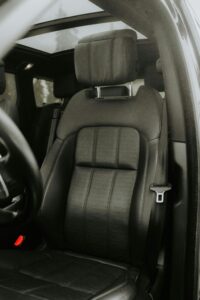


A thermoelectric module is an advanced semiconductor electronic component, widely known as a Peltier cooler. It acts as an efficient and compact heat pump using the Peltier effect to transfer heat from one side to the other when a DC current is applied. This results in cooling on one side and heating on the other, making it a versatile solution for both cooling and heating based on current direction.
Besides cooling and heating, thermoelectric modules can generate electricity from temperature differences through the Seebeck effect. A greater temperature difference produces more electricity, making these modules suitable for power generation in remote or hard-to-reach areas.
Due to their minimal environmental impact and lack of combustion or complex mechanical parts, thermoelectric technology is gaining attention in sustainable energy and green technology. These modules can generate power directly from temperature differences, reducing dependence on natural resources and carbon emissions.
Thermoelectric modules are used in various applications, from precise temperature control in medical devices to cooling consumer electronics and powering remote sensors, demonstrating their practicality and efficiency across industries. With significant potential for future development, they are especially promising for advancing low-carbon technologies and enhancing energy efficiency.
Thermoelectric chips typically consist of multiple thermocouples made from two different semiconductor materials (usually n-type and p-type) connected in series or parallel to increase voltage or current output. Commonly, the semiconductor material is bismuth telluride (Bi2Te3) due to its excellent thermoelectric properties.
Applications
- Cooling Systems: Thermoelectric cooler(TEC) are widely used in small cooling devices such as electronic equipment, car seats, and portable refrigerators.
- Power Generation: Thermoelectric generator(TEG) convert waste heat from sources like car exhaust systems and industrial furnaces into electrical energy, improving energy efficiency.
-
Application Scenarios

Car seats
Thermoelectric cooling modules are widely used in high-end car seats. Additionally, they are indispensable in applications such as car cup holders, car refrigerators, head-up displays, and automotive power battery thermal management.

Appliances
In household appliances, the application of thermoelectric cooling modules is quite extensive, including air conditioners, air purifiers, hot and cold water dispensers, wine coolers, refrigerators, and more, offering broad market prospects.

Medical
In the field of medical equipment, precise temperature control using thermoelectric cooling modules is widely applied in PCR machines, biochemical analyzers, constant temperature incubators, cryolipolysis machines, genetic testing equipment, and more.

Semiconductors
During the semiconductor chip fabrication process, precise temperature control to within ± 0.1 degrees Celsius is required for the packaging, specific gases, liquids, etc., to ensure the accuracy of chip production.

Laser Projection
Thermoelectric cooling modules can be used to cool and heat certain components within a projector, such as the laser light source, 3LCD liquid crystal panels, and fluorescent color wheels, within a confined space to ensure the normal operation of the projector.

Fiber Optic Communication
In optical fiber communication, precise temperature control using TEC is required to control the wavelength temperature drift of optical transmitter devices or modules. Thermoelectric cooling modules have been widely utilized in the packaging of optical components.



